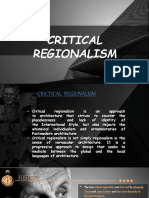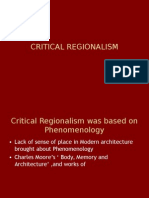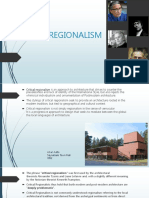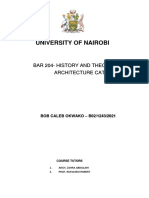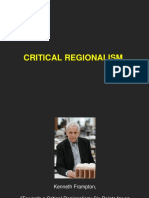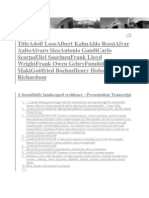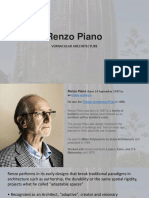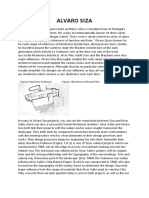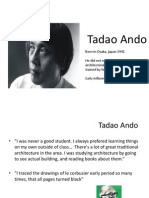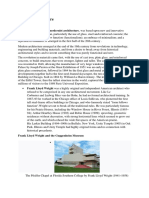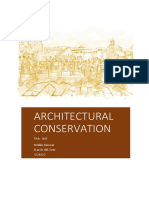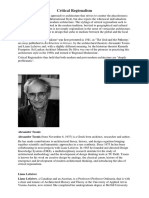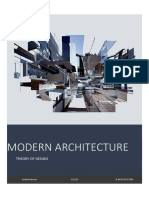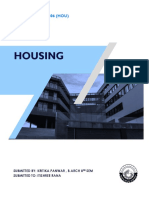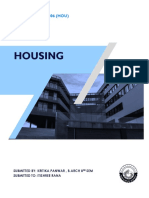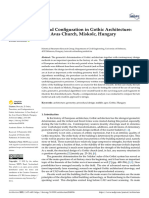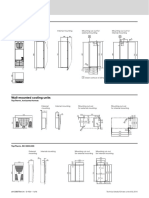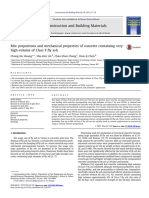0% found this document useful (0 votes)
77 views11 pagesKRITIKA PANWAR 8TH SEM TOD Critical Regionalism
Critical regionalism is an architectural approach that counters placelessness while also rejecting superficial ornamentation. It seeks to provide modern designs that are rooted in local context, climate, materials, and tectonics. The term was coined by Frampton to describe a "reformed modernism" that mediates between global and local languages. Several architects are discussed who exemplify critical regionalism, including Geoffrey Bawa, Mario Botta, Jorn Utzon, Alvar Alto, and Tadao Ando. Their works demonstrate how critical regionalism reconciles universal modernism with geographical and cultural influences through an emphasis on materials, landscape, and human scale.
Uploaded by
Kritika PanwarCopyright
© © All Rights Reserved
We take content rights seriously. If you suspect this is your content, claim it here.
Available Formats
Download as PDF, TXT or read online on Scribd
0% found this document useful (0 votes)
77 views11 pagesKRITIKA PANWAR 8TH SEM TOD Critical Regionalism
Critical regionalism is an architectural approach that counters placelessness while also rejecting superficial ornamentation. It seeks to provide modern designs that are rooted in local context, climate, materials, and tectonics. The term was coined by Frampton to describe a "reformed modernism" that mediates between global and local languages. Several architects are discussed who exemplify critical regionalism, including Geoffrey Bawa, Mario Botta, Jorn Utzon, Alvar Alto, and Tadao Ando. Their works demonstrate how critical regionalism reconciles universal modernism with geographical and cultural influences through an emphasis on materials, landscape, and human scale.
Uploaded by
Kritika PanwarCopyright
© © All Rights Reserved
We take content rights seriously. If you suspect this is your content, claim it here.
Available Formats
Download as PDF, TXT or read online on Scribd
/ 11
